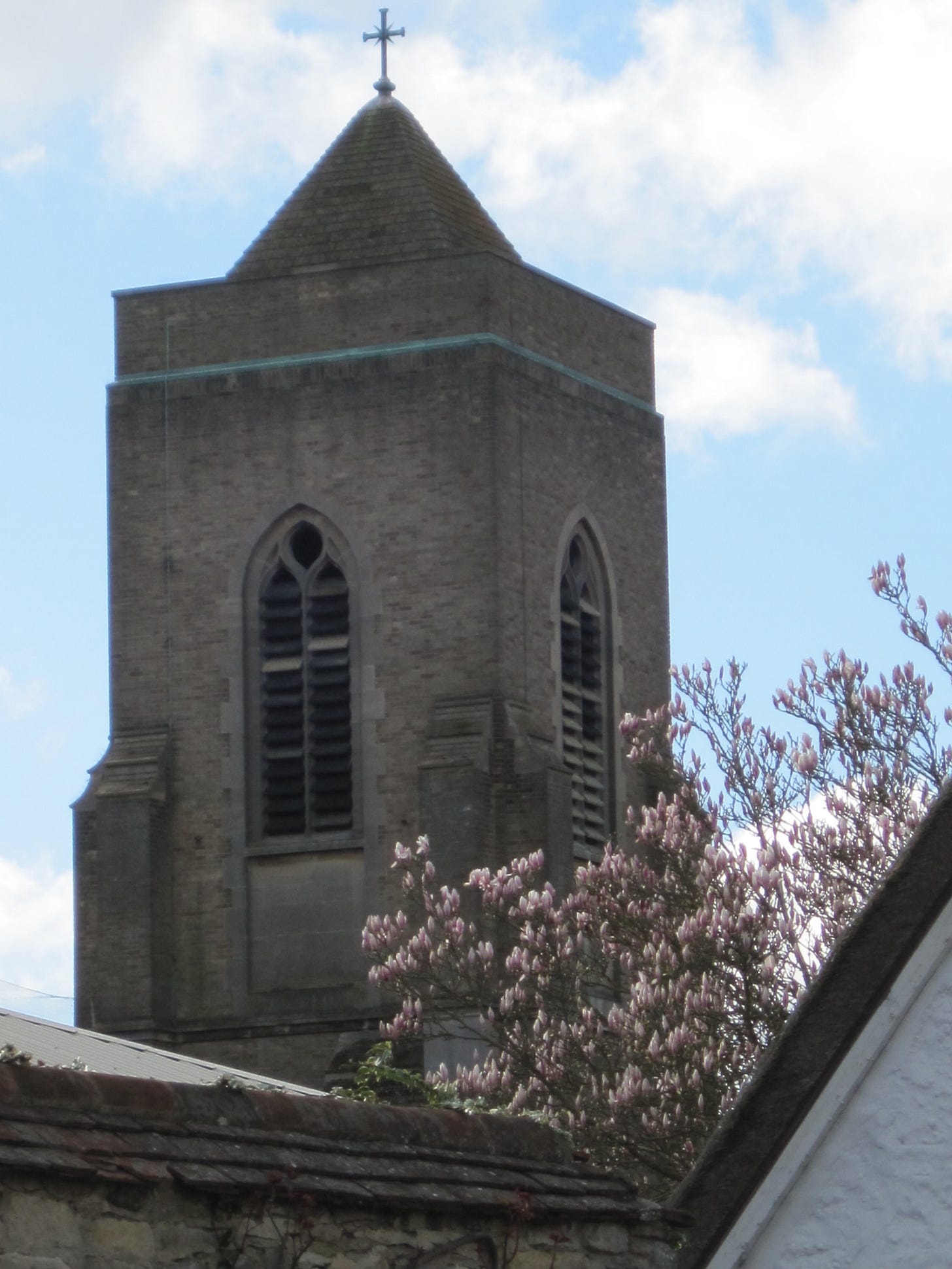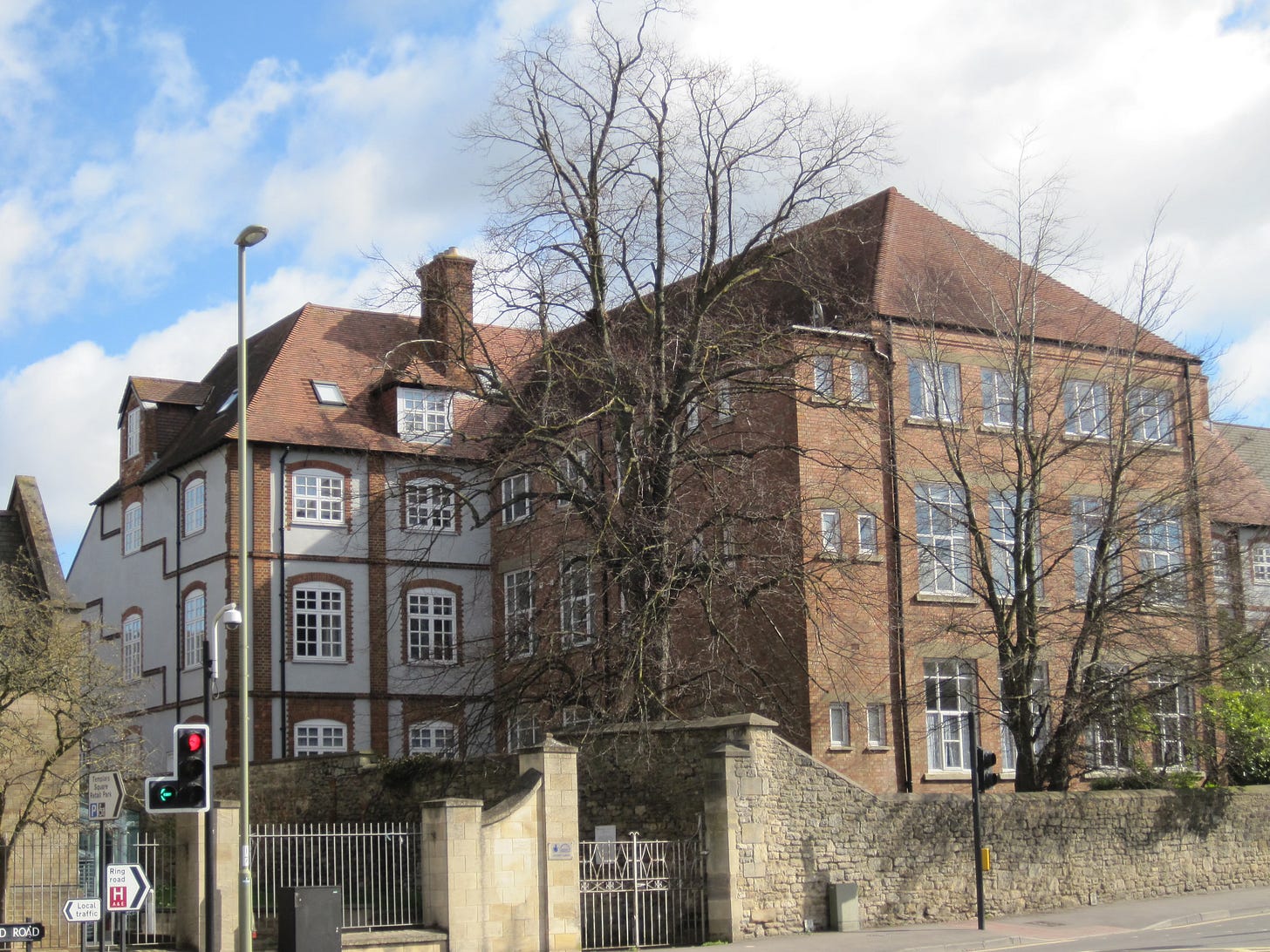From the end of my road you can see the domes and spires of Oxford. On a misty day it feels like an alternative world that can only be reached through a magic portal, like the one Lyra used in Philip Pullman’s Northern Lights – but any dust that suffuses Temple Cowley comes from the prosaic spirit of William Morris – the other one, the one who built cars. Look in the opposite direction and the massive outline of the car works dominates the sky, with a proud Mini perched on its roof like some sort of homage to Michael Caine and The Italian Job.
This is an area of shape-shifting and transformation, where buildings carry the ghost-like imprint of their former identities. St Luke’s church, with its square bell tower of yellowish brick trimmed with a thin line of pistachio green, was built by Morris in the 1930s to care for the souls of his workers. It is now the Oxfordshire records office with a sign inviting you to ‘Trace your family history here’. Young professionals share high-ceilinged flats in the old military college where in 1912 Morris installed his first factory. The Morris Motors social club with its perfectly sprung dance floor has been demolished to meet Oxford’s insatiable need for housing, though fortunately the two-man garage business next door survives – and therefore so does my car. Even the 1960s concrete office block that so impressed Bill Bryson with its ‘arresting grandeur’ when it was occupied by the Potato Marketing Board has been converted into buy-to-let apartments. The swimming pool is being knocked down and surely the ugly bulk of the police station must be next.
There are few car workers left in this part of Cowley but tradesmen still make regular pilgrimages to the man-shrine of Smith & Low, with its boxes of washers and wires, batteries and bulbs. The assistants break off their incomprehensible conversations to serve me politely, carefully handwriting a receipt for a single fuse, a battery for my car key, or a connecting cable for the TV. Further along the street you can place a bet, get a tattoo, or pick up a Jamaican takeway, while in the other direction is a golf course. Red kites circle overhead, heavy bombers re-enacting the Battle of Britain with the plucky seagulls. It’s as if the area can’t make up its mind whether it’s the inner city or suburbia.
In tall Victorian houses and terraced cottages families take refuge from the student-infested streets of East Oxford but the old market gardens have been replaced by small industrial units and 1930s semis. The only reminders of our rural past are the stone boundary walls that still line the streets, and the mature fruit trees in our gardens. On summer Sundays African voices praise the lord harmoniously from the open windows of the old community centre next to the Catholic church; on Fridays men in white caps emerge from the Islamic education centre that used to be a pub before it turned into an Afghan restaurant. Spanish and Chinese students ebb and flow from the language school next to the old manor house, and the former house of the Salesian Fathers now provides one fortunate home owner with a bright stained glass window. Oxford, the old joke goes, is the Latin Quarter of Cowley; if so, then maybe Temple Cowley, with its rich mix of cultures, is its Montmartre.






